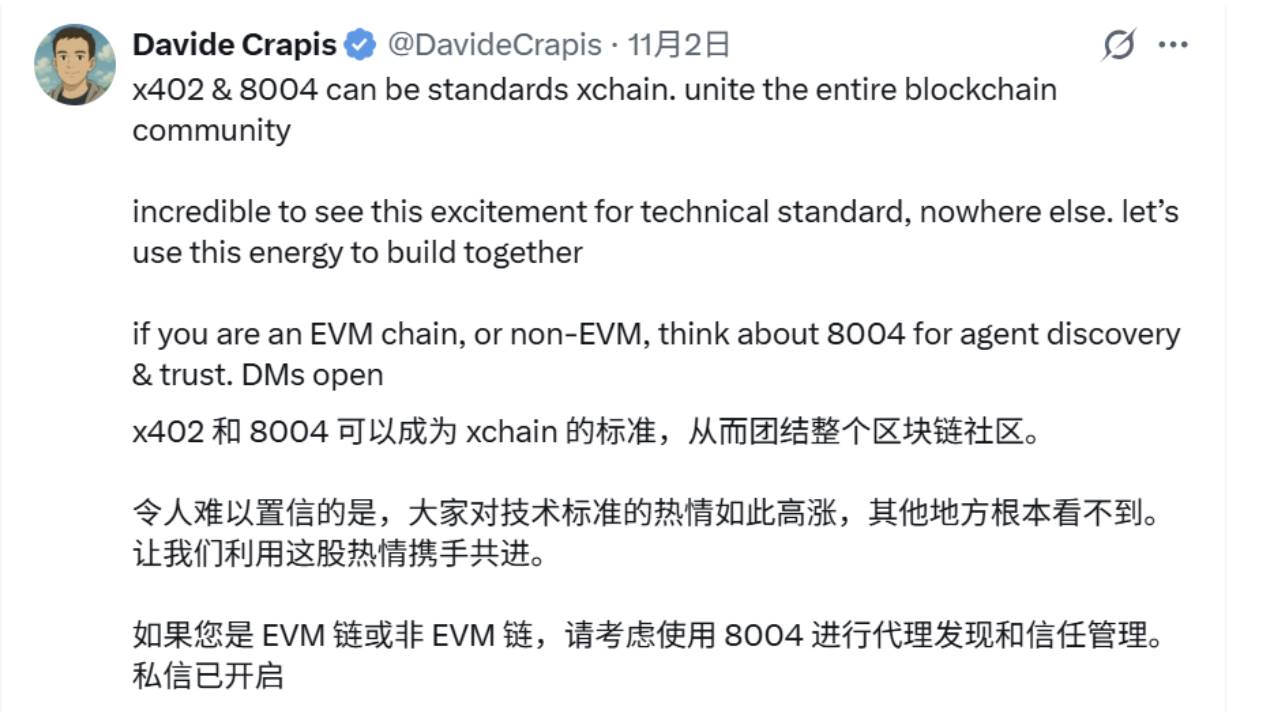Earn $16 million in a few minutes, millions liquidated: Full analysis of the XPL incident
On August 26, a massive buy order for XPL on Hyperliquid swept the order book, triggering a chain liquidation and causing the price to surge by 200% in a short period. A whale profited over $16 million, while short sellers suffered heavy losses. The incident exposed structural flaws in the order book model: low liquidity makes it vulnerable to manipulation, and liquidations create a positive feedback loop with price movements. This reflects a common risk in DeFi perpetual contracts, highlighting the need to improve protocol design through preemptive risk controls and spot pool linkage, in order to balance risk and reward distribution. Summary generated by Mars AI. The content generated is still being iteratively updated for accuracy and completeness.
1. Historical Review: What Exactly Happened?
In the early hours of August 26, XPL experienced a few minutes of a "roller coaster ride" on Hyperliquid:
05:36 A massive buy order swept the order book, with single trade sizes ranging from tens of thousands to hundreds of thousands of dollars, rapidly pushing up the price of XPL.
05:36–05:55 The mark price, dominated by internal order matching, jumped far more than the CEX external reference, causing a large number of short positions to fall below maintenance margin. The system initiated liquidations: liquidation orders were directly placed into the order book, forming a positive feedback loop of "sweeping the book → liquidation → sweeping again," continuously driving up the XPL price.
05:55 The price soared to its peak, with an increase of nearly +200% within just over ten minutes. At the same time, a whale account took profits, earning over $16 million in a single minute. Some short accounts were liquidated for millions of dollars within minutes.
05:56 Market depth recovered, the price quickly fell back, and the XPL contract market returned to "normal," but a batch of short accounts had already been wiped out. Almost simultaneously, the ETH perpetual price on the Lighter platform also experienced a flash crash, briefly dropping to $5,100.
This indicates: this is not a problem of a single platform, but a concentrated exposure of the structural risks of the entire DeFi perpetual contract ecosystem.
2. What Were the Consequences?
Whales made huge profits, shorts suffered heavy losses. Even low-leverage hedgers were affected.
Many people thought that 1x leverage hedging was "risk-free." But in this incident, even 1x short positions with substantial collateral were liquidated during the flash crash, resulting in losses of millions of dollars. This led many users to conclude: "I won't touch these isolated markets again." But the truth is much more complex.
3. Core Issue: Structural Flaws of the Order Book Model
After the XPL incident, much of the discussion focused on "single oracle dependency" or "lack of position limits." But these do not address the core issue.
The Perp protocol itself has multiple implementation paths:
Orderbook (order book driven)
Peer-to-Pool (pool as counterparty)
And AMM/Hybrid mixed forms
The problem today occurred with the order book implementation. Its structural flaws are:
Effective Depth and Chip Distribution
1. The order book may appear deep, but the actual effective depth depends on chip distribution.
2. When chips are concentrated in the hands of a few whales, even a small push can trigger a chain reaction.
Price Anchoring Relies on Internal Trades
1. In thin markets, order book trades directly dominate the mark price.
2. Even with oracles, as long as the external spot anchor is not strong enough, this reliance is a vulnerability.
Liquidation and Order Book Form Positive Feedback
1. Liquidation orders themselves need to enter the order book → further push the price → trigger more liquidations.
2. In illiquid markets, this is an "inevitable stampede," not an accidental event.
As for measures like "setting position limits for single users," they are actually meaningless. Positions can be split across multiple sub-accounts or wallets, and the market-level risk remains. Therefore, flash crashes are not the result of malicious manipulation, but the inevitable fate of the order book mechanism under low liquidity conditions.
4. Back to the Essence: What Problem Are Perpetual Contracts Solving?
When you say "I'm bullish on ETH," what actually happens behind the scenes?
-If it's spot trading, you spend 1000U to buy ETH; if the price rises, you profit, if it falls, you lose.
-If it's a perpetual contract, you put up 1000U as margin, can open a 10x long position, leveraging a $10,000 position, amplifying both gains and risks.
There are two key questions to ask here:
Where does the money come from?
Your profit must come from the counterparty (the shorts) or the LP-provided liquidity pool.
Who determines the price?
Traditional markets: Order book trades directly reflect the price; more buying pushes the price up, which is the market's feedback mechanism.
On-chain perpetuals: Most protocols (like GMX) do not have their own matching books, but rely on CEX oracle prices.
5. Problems with the Oracle Model
Oracle prices usually come from CEX spot trades, which means on-chain trading volume cannot feed back into the price.
Although oracles have delays, the more fundamental issue is:
You open a $100 million position on-chain, but there is no corresponding spot volume externally.
In other words, on-chain trading demand cannot in turn influence the price, and risk is "accumulated" within the system.
This is the exact opposite of the order book model: order book price feedback is too fast and easily manipulated; oracle price feedback is delayed, and risk is easily released later.
6. Basis and Funding Rate
This brings up another key issue: How is the price difference (basis) between spot and contracts corrected?
In traditional markets, if there are far more bulls than bears, contract prices will be higher than spot.
Perpetual contracts introduce a funding rate mechanism to adjust:
Too many longs → funding rate turns positive, longs pay shorts;
Too many shorts → funding rate turns negative, shorts pay longs.
Theoretically, the funding rate can anchor contract prices back to spot.
But on-chain perps are more complicated: if spot market depth is insufficient, even a high funding rate may not correct the basis. Especially for less popular tokens, on-chain contracts may deviate from spot for long periods, becoming an almost independent "shadow market."
7. The Illusion of On-Chain Depth
Many people think that only less popular tokens are easily manipulated, and top assets are safe. But the truth is: the real on-chain spot depth is far less than imagined.
Take the top three tokens in each ecosystem as an example:
-On Arbitrum, apart from ETH, the depth of mainstream tokens within a 0.5% price range is often only a few million dollars.
-On leading DEXs like Uniswap, even for ecosystem tokens like UNI, the on-chain spot depth is insufficient to withstand tens of millions of dollars in instantaneous impact.
What does this mean?
Effective depth is often much lower than the book depth, especially when chips are concentrated, the actual resilience is even weaker.
In this environment, the threshold for price manipulation is not high. Even the top three tokens in an ecosystem can be easily pushed up or down in extreme market conditions.
In other words: the structural risk of on-chain perps is not a "special case" for less popular markets, but the "norm" for the entire ecosystem.
8. Directions for Next-Generation Protocol Design
From this XPL flash crash event, we can see more clearly: the problem is not a vulnerability of a particular platform, but the structural contradiction between the current order book and on-chain liquidity.
Therefore, if we are to discuss "next-generation Perp protocols," at least three directions are worth exploring:
1. Pre-trade Risk Control: Every opening, swap, liquidity addition/removal, and position adjustment should first simulate the market's health after execution. If the risk exceeds the threshold, restrict or adjust in advance, rather than waiting for the position to fall below maintenance margin and then passively liquidating.
2. Spot Pool Linkage: The main on-chain models currently either feedback too quickly (order book) or too slowly (oracle). A better direction is to link contract positions with spot pools, so that when risk accumulates, changes in spot market depth can buffer or dilute it. This avoids both delayed accumulation and instantaneous stampedes.
3. LP Priority Protection: Whether order book or Peer-to-Pool, LPs are the most vulnerable link. Next-generation protocols need to build LP risk control mechanisms into the protocol layer, making LP risk transparent and controllable, rather than leaving LPs as the passive last resort.
9. Exploration and Opportunities in Practice
It's easy to talk about direction, but actual implementation is difficult.
But some new attempts are already happening:
Pre-trade risk control: Simulate market health before trade execution to filter risks in advance.
Contract and spot pool linkage: Let positions and spot liquidity provide feedback to avoid risk accumulation or instantaneous stampedes.
LP priority protection: Embed LP risk control into the protocol layer, rather than letting LPs passively take the hit.
Meanwhile, we cannot ignore a bigger market fact:
The perpetual contract market generates over $3 billion in fees and revenue sharing every year. In the past, this pie was almost exclusively divided among a few centralized exchanges and professional market makers. If next-generation protocols can combine AMM technology to break down "market making" into pooled liquidity provision, then more ordinary participants can share in this market dividend. This is not just an innovation in risk control, but a reconstruction of incentive mechanisms.
In these explorations, some new projects are also trying different paths. For example, AZEx is leveraging Uniswap v4 Hook mechanism, attempting to combine "pre-execution risk control + dynamic funding rates + market freeze in extreme cases" with "LP pool revenue sharing."
10. Conclusion
The XPL flash crash reminds us: risk is not in the charts, but in the protocol.
Today's DeFi perpetual contracts are mostly order book driven. As long as liquidity is insufficient and chips are concentrated, similar stories will inevitably repeat.
The real competition for next-generation Perp protocols is not UI, points, or rebates, but: can we design a new Perp protocol where "price discovery, risk control, and LP protection" form a closed loop, rather than repeating stampedes in extreme markets? Can we return the $3 billion in market revenue from the hands of a few to more participants?
The next generation of protocols must not only solve risk issues, but also redistribute dividends. Whoever can achieve these two points will have the opportunity to define the next generation of the DeFi perpetual contract market.
Disclaimer: The content of this article solely reflects the author's opinion and does not represent the platform in any capacity. This article is not intended to serve as a reference for making investment decisions.
You may also like
"Crypto President" Trump presses the bull market start button?
Trump's victory led BTC to reach new highs for two consecutive days, with a peak at $76,243.

Behind the x402 boom: How does ERC-8004 build the trust foundation for AI agents?
If the emergence of x402 has demonstrated the substantial demand for AI agent payments, then ERC-8004 represents another fundamental and underlying core element necessary for building this vast machine economy.

PFDEX Makes a Grand Debut at the PopChain Global Ecosystem Conference in Hong Kong

Cathie Wood Revises Bitcoin’s 2030 Forecast: Will Stablecoins Take Over?
In Brief Cathie Wood revises Bitcoin's 2030 target due to rapid stablecoin adoption. Stablecoins serve as digital dollars, impacting Bitcoin's expected role. Trump's crypto-friendly policies encourage Bitcoin's market prominence.

